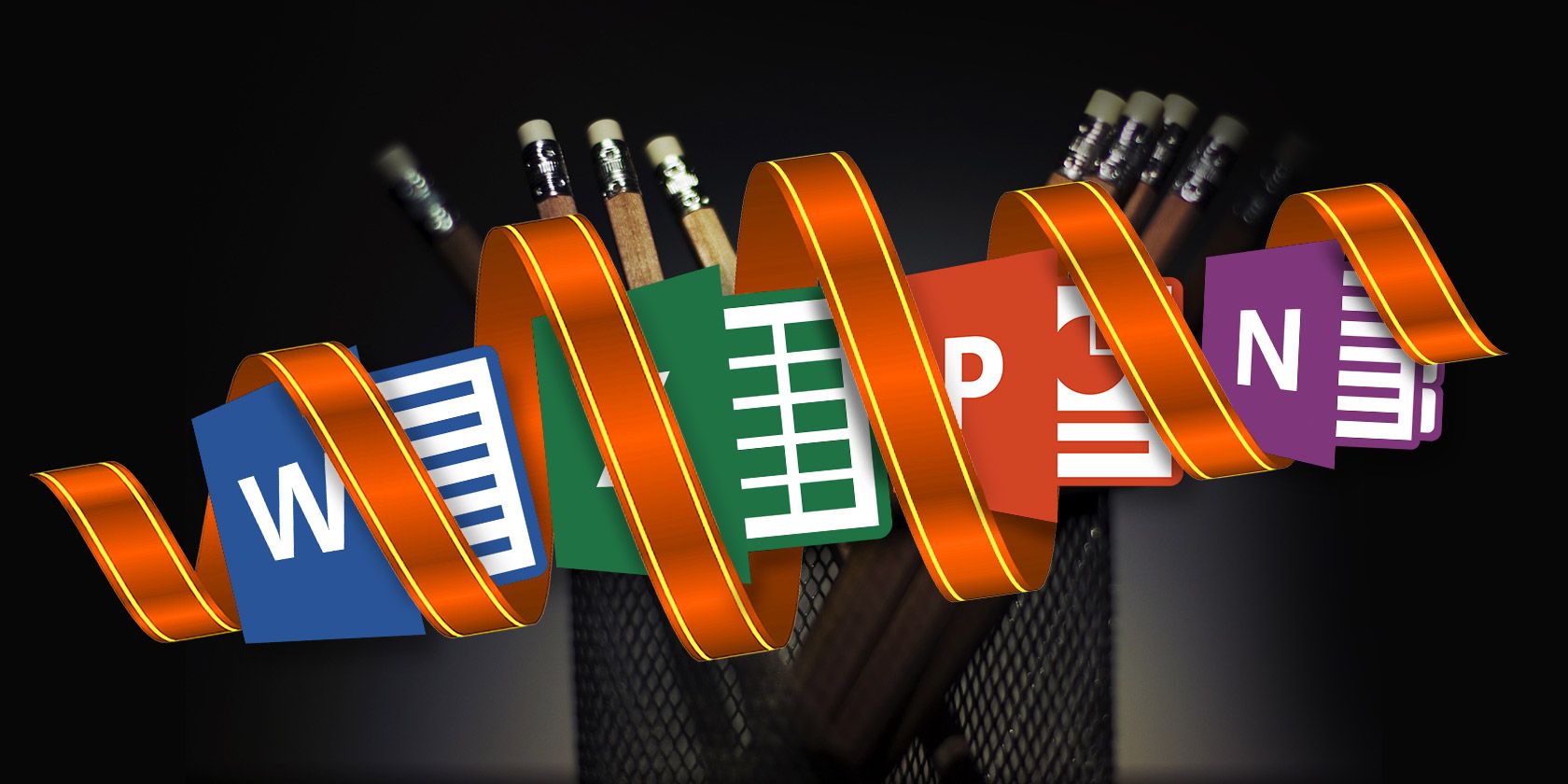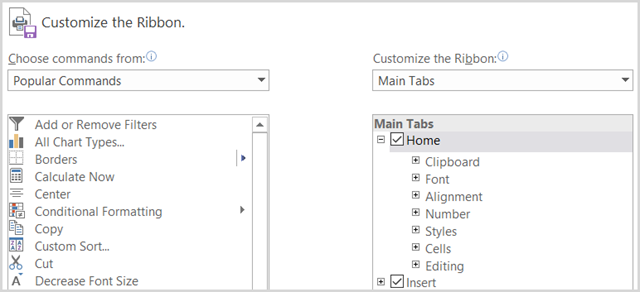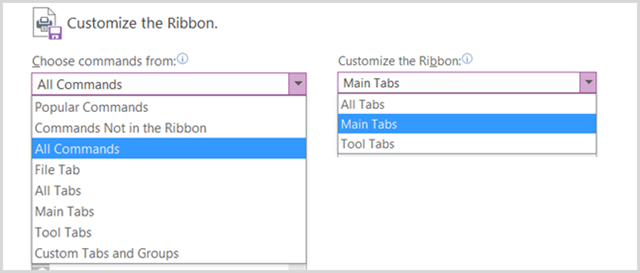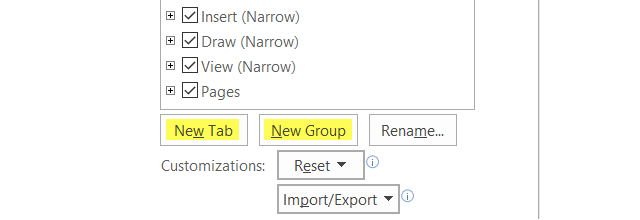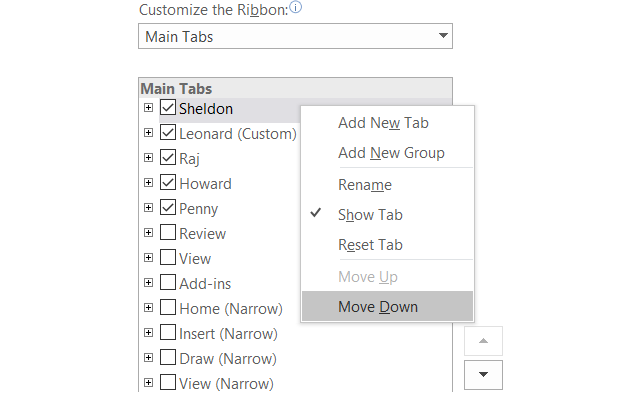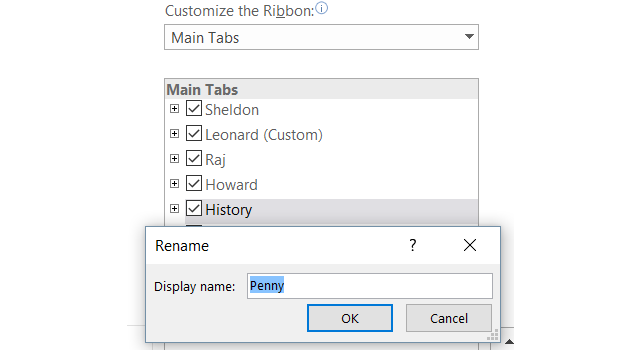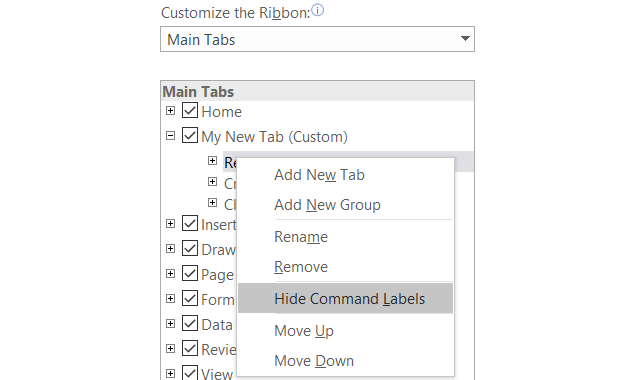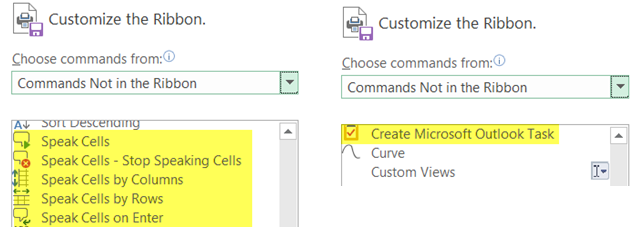Your application workspace is just like your physical one. You want it to have all of the items you need, minus those that just get in your way. So, when it comes to working with Microsoft Office 2016, customizing your ribbon and menu items are important to your efficiency, productivity, and overall effectiveness.
Accessing, Hiding, and Showing the Ribbon
In the Office 2016 applications, including Word, Excel, PowerPoint, Outlook, and OneNote, accessing and customizing the ribbon and menu items is performed the same way. What differs are the customization options available within each application.
To hide or show the ribbon, click the Ribbon Display Options button from the top right of your application. You then have three options for your ribbon display:
- If you choose Auto-hide Ribbon, this will provide you with the most work space and lets you display the ribbon when needed by clicking on the top of the application.
- If you choose Show Tabs, this also provides you with more workspace by removing the commands, but keeps the tabs at the top for easy access with a click.
- If you choose Show Tabs and Commands, this will show both the tabs and the commands at the same time.
Basic Customizations
To access the ribbon customization options, select File > Options > Customize Ribbon. Each application's settings will display the options in the same format with commands on the left and the ribbon contents on the right.
The ribbon contents listed under Customize the Ribbon on the right side include checkboxes and plus signs. The checkboxes indicate what is contained in the ribbon and the plus signs allow you to expand and view included items and actions. For instance, in PowerPoint the Home tab currently includes the Clipboard command with its available actions.
To customize the ribbon contents, you will basically move items between the Choose commands from list on the left side and the Customize the Ribbon list on the right side. Begin by selecting the sets of lists from the drop-down boxes on each side.
Next, you can uncheck any items on the right that you no longer need to display in the ribbon. For example, if you no longer want the Draw tab in OneNote, uncheck the box next to Draw and click OK. For items with plus signs, you can add or remove individual items. So, if you prefer to keep the Draw tab in our example, but have it contain all actions except for Convert, you can remove it easily. Just select Convert, click the Remove button in the center, and select OK.
Adding commands and tabs to the ribbon is just as simple, yet you move items in the opposite direction. First, create either a new group within an existing tab or a new tab altogether, using the appropriate button at the bottom.
You can rename them each anything you like and if you create a group you can choose a nifty icon as well. Then, simply select the command from the left side, click the Add button in the center, and hit OK when you are finished.
Your Ribbon, Your Way
Now that you know how to access, add, and remove items from the ribbon, making it your own is the next, fun step. Maybe you never have the need for the Mailings tab in Word, the Review tab in Excel, or the History tab in OneNote. Or, perhaps you want to keep and customize those tabs to suit your everyday needs. Here are a few examples of how efficient and effective you can make your ribbon.
Rearrange the Tabs
Using the arrows or the context menu in the Customize the Ribbon section, you can quickly move items up and down to determine their placement in the ribbon. The tab at the top of the list will display at the far left of the ribbon with subsequent tabs following to the right in the same way that you naturally read.
Try putting the tab you use the most first, the next one second, and so on. Maybe you do not use the Home tab on a regular basis in Excel, but you use the Formulas tab constantly. So, move the Home tab down and the Formulas tab up. You can also rearrange the commands within the tabs, giving you even more flexibility.
Rename the Items
Not only can you rename custom tabs and groups that you create, but those that are built-in as well. Say you want to change the labels of the tabs to the names of the main characters on The Big Bang Theory, no problem. Sheldon, Leonard, Raj, Howard, and Penny are just a click away.
Just select the item from the Customize the Ribbon list, click the Rename button at the bottom, give it the name you want, and finish by hitting the OK button.
Make it Your Own
Believe it or not, you can create your own ribbon with the exact tabs and commands that you want very easily. For instance, if you only use the drawing commands in OneNote, with just a couple of others, this can be accomplished.
First, create a New Tab and then either create New Groups within it if you like or just add individual commands. Remember that you can add commands from other tabs as well as those that do not currently display in the ribbon. Next, rearrange the commands in the order you prefer them by using the arrows and then rename them to what you prefer.
When you are finished, uncheck the rest of the tabs that you no longer need and click OK. Your end result is your own tab with the commands you need, all named the way you want them.
Use Icons Over Text
If you are a visual thinker or simply prefer icons to text in your ribbon, you can easily make this happen. Although you cannot hide the text from the commands within the main tabs, you can do it for groups that you create containing commands.
For example, if you are using PowerPoint, create a New Group, whether it is within a new tab or an existing one, by clicking the appropriate buttons from the bottom to set this up. Then, add the commands you would like to the group and rename and rearrange them as you like. When you are finished, right-click on the new group you created and select Hide Command Labels. Keep in mind, this can only be done with commands added to custom groups that you create.
Review Unused Commands
In the Customize the Ribbon box, within the Choose commands from section on the left, select Commands Not in the Ribbon from the drop-down list. These are the commands that you are not using currently in the ribbon and you may be surprised at the available options.
If you like to use audio, you can add the speak commands to hear the cell text in your Excel spreadsheet or selected text in your Word document spoken out loud. If you use Outlook for managing your to-dos, you can add a command to create a task from your ribbon with a simple click. If you want to include a quick drawing using your mouse, you can add the Scribble command. These are just a few examples of the hidden options available that could be quite useful to you.
Additional Features
Exporting Settings
If you spend valuable time customizing your ribbon, you can save your settings by exporting them to a file. Select the Import/Export button and then Export all customizations. In the following pop-up window you can choose a location and rename the file. Then click Save.
Importing Settings
To import your saved customizations, select the Import/Export button and then Import customization file. Then navigate to the file location in the pop-up window and click Open. You will need to confirm that you want to replace your current settings with those in the file.
Resetting Customizations
In the event you want to reset the settings back to the default ones, you can click the Reset button. Then choose from either Reset only selected Ribbon tab or Reset all customizations and click OK.
Are You Ready to Customize?
Depending on how much customization you are planning on, it may take you a little time. However, the end result will give you the exact items you need and use in your ribbon and menu while eliminating those you do not. The ability to create an effective workspace in your Office 2016 applications is a great feature that provides the flexibility to make it your own.
If you have additional suggestions for creative ribbon and menu customizations, please share them in the comments below.

